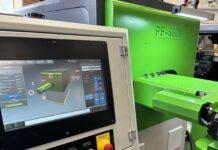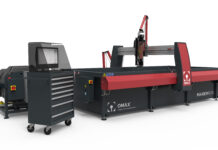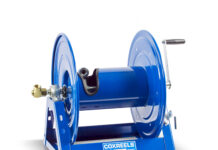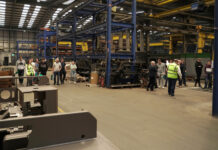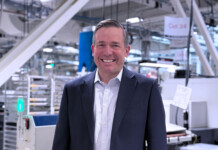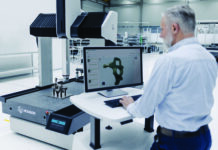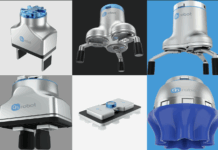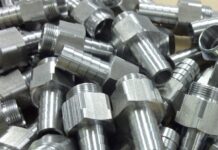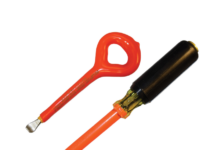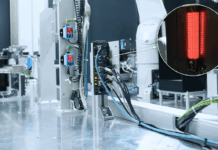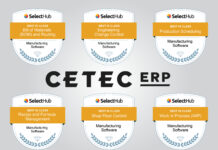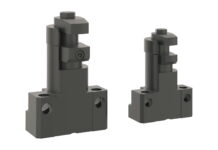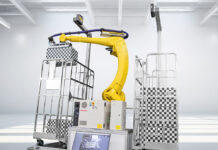Machine builder develops energy-saving, quiet hydraulic unit for its own equipment; quickly realizes benefits as OEM stand-alone for other machine builders, with “digital factory” control capabilities onboard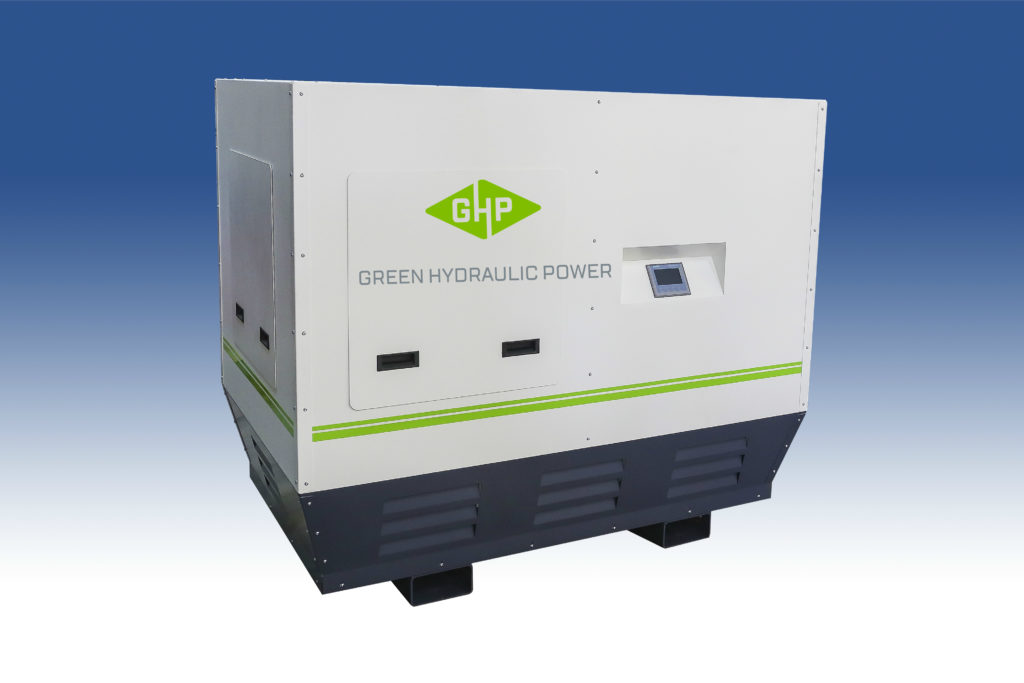 MJC Engineering is a custom machine tool builder in Huntington Beach, California, specializing in metal-spinning machines for such applications as sheet spinning, flow forming, wheel spinning and rotary forging. The company’s machines are found worldwide, producing end products such as car wheels, aircraft engine housings, spacecraft fuel tanks, welding gas cylinders and more. MJC machines typically utilize very large volumes of hydraulic power in operation.
MJC Engineering is a custom machine tool builder in Huntington Beach, California, specializing in metal-spinning machines for such applications as sheet spinning, flow forming, wheel spinning and rotary forging. The company’s machines are found worldwide, producing end products such as car wheels, aircraft engine housings, spacecraft fuel tanks, welding gas cylinders and more. MJC machines typically utilize very large volumes of hydraulic power in operation.
About three years ago, the president at MJC, Carl Lorentzen, began investigating the configuration of the hydraulic units used on his company’s machinery. Lorentzen had a great interest in servo-pump technology, having read about its application in other industrial uses such as injection molding machines, extruders, stamping presses, offshore oil rig assemblies, cranes, lifts and other materials handling equipment.
Lorentzen adds, “We had looked at a variety of ways to improve the energy efficiency of our machines. Being a California company, there are substantial incentives offered here for documented energy savings in machine building and operations. Plus, I felt it was simply the right course of action to do our part in protecting natural resources.”
He also cited a recent incident, where MJC changed insurance carriers and, as part of the company safety audit, sound levels were tested and the hydraulic power units were a concern. Lastly, as MJC sells its machines to premier OEMs around the world, issues involving big data capture, IIOT and Industry 4.0 integration were surfacing from customers.
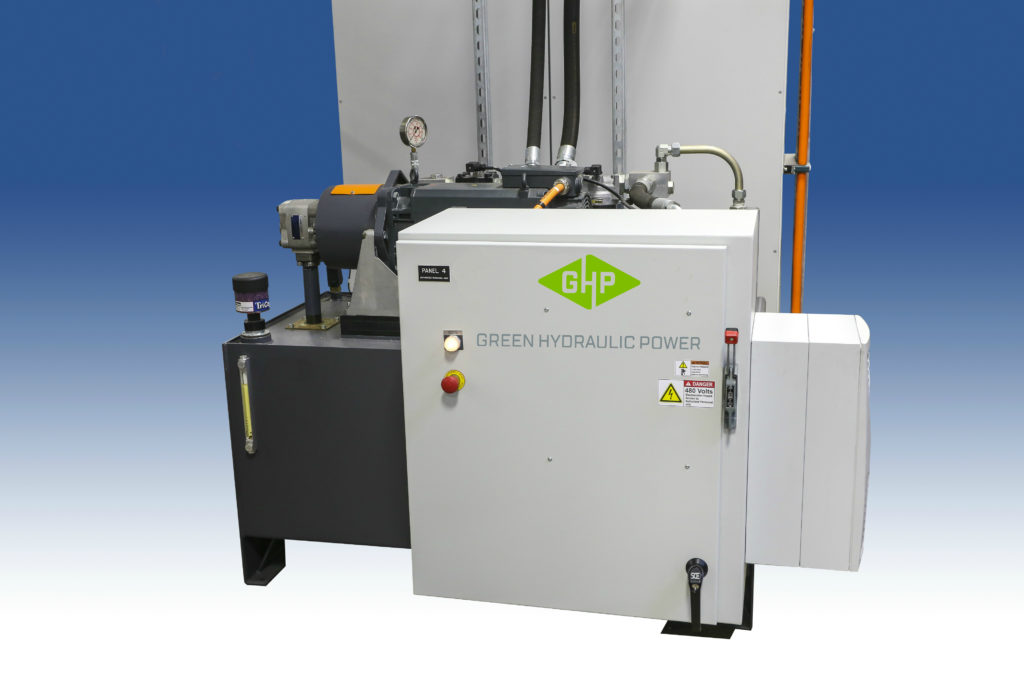 Light Bulb Moment
Light Bulb Moment
All these factors caused a “light bulb moment” for the builder. MJC began serious investigation into the application of servo-pump technology to replace the constant motor operation on the main hydraulic unit of the machines, in a concerted effort to reduce energy consumption, noise and, owing to the smaller hydraulic reservoirs needed, the machine footprint. These definable upsides for MJC machine design and the company’s marketing of its equipment caused considerable excitement for Lorentzen, who notes, “We are fortunate to have on our staff an amazing group of electrical, hydraulic, controls and mechanical engineering talents. All these engineers had the same reaction I did and we began to rethink our hydraulic power units from the ground up.”
Likewise, Lorentzen turned to his longtime supplier of CNC, PLC and drives technology, Siemens, for further assistance. A team led by Chris Britton, the Siemens sales manager for the region, assisted with various application engineering studies, energy and controls testing to affect the optimum design, all while working in concert with the MJC team.
Britton explains, “Carl’s company is a longtime and loyal Siemens customer, as they use a wide variety of our motion controls and components on their machine builds, including CNC, PLC, motors, spindles, power modules and our drive control chart (DCC) technology that allows configuring of all the control loop structures. As it happens, Siemens and MJC have been frequent project partners for some time, so this marriage of technologies was even easier to accomplish. We offer our Sinamics servo-pump technology to customers, utilizing various pumps with our motors and drives.”
A further advantage quickly emerged, as the Green Hydraulic Power™ unit (GHP) began to take shape. Little or no external cooling was required to dissipate the ambient heat of the unit.
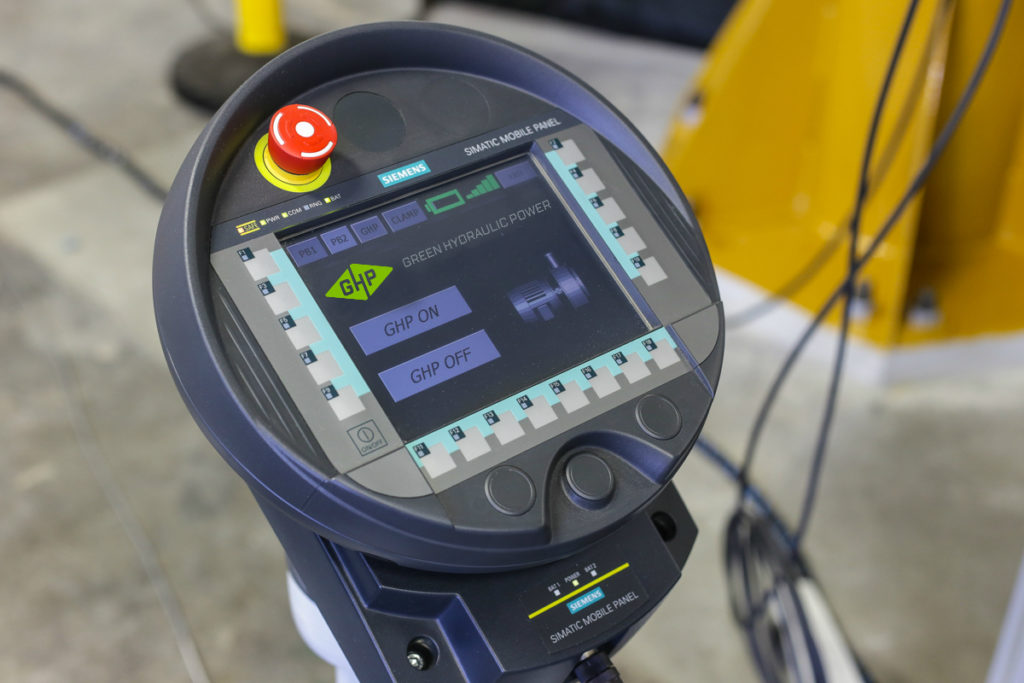 Moving Toward Digitalization
Moving Toward Digitalization
Further, in response to the market’s movement toward digitalization, there were two aspects of note. From the OEM perspective, MJC benefitted from the conceptualization, engineering and commissioning tools offered by Siemens in the build-up of the GHP units. Sizer®, for example, orchestrated the integrated data across the entire platform of drives technology, enabling the MJC engineering team to match the most suitable products to the specific requirements of the end user applications, with a drastic reduction in the engineering time on subsequent unit designs. M-CAD likewise enabled the importing of all motor specifications to match the requirements of each job.
Finally, for the end-user, the Siemens TIA Portal provides faster commissioning, increases productivity and facilitates comprehensive data capture, which benefits both operations/maintenance personnel and the integration of the data into a “digital factory” mode, as the system’s condition monitoring and diagnostics can reside in the cloud or otherwise be networked to a controls communication stream. Depending on the drives technology selected, it is also possible for the end user to perform online configuration of the drives via their web server.
GKN Aerospace in Orangeburg, South Carolina was the first customer for whom an entirely new MJC spinforming machine was built, utilizing a complete and now duly named Green Hydraulic Power™ unit. MJC’s Vice-President Per Carlson and his hydraulic engineer Jerry Wang designed the unit. An already documented result of the GHP unit onboard its machine, GKN has experienced nearly a 70% energy consumption savings, plus the quieter operation and smaller footprint.
 Following this development, Lorentzen had another, more profound revelatory moment. He realized the unit could easily be adapted onto any type of heavy hydraulic piece of equipment. Subsequently, he established Green Hydraulic Power, Inc., which today functions as a free-standing enterprise.
Following this development, Lorentzen had another, more profound revelatory moment. He realized the unit could easily be adapted onto any type of heavy hydraulic piece of equipment. Subsequently, he established Green Hydraulic Power, Inc., which today functions as a free-standing enterprise.
From the Siemens side, this development has resulted in additional business from MJC and, as a result, a cooperative marketing venture has taken shape, with funding provided to promote the green impact of the unit.
As MJC electrical engineer and robotics manager Jose Machuca explains, “The GHP is a complete turnkey system with I/O options to run with any PLC, to control the power utilization on virtually any type of hydraulically-powered machine. We researched the variable speed drive hydraulics for over two years to devise the optimum solution on our current standard models, which comprise 15, 30, 55 and 80 kW units.” Lorentzen further notes, “Nobody is offering a closed-loop, engineered system like the GHP for integration onto a customer’s machine, with practically no impact on that machine’s design. It quickly became clear to us we had a real gem here, as GHP can be used as an OE component or retrofit onto an existing piece of machinery in the field. That includes practically every machine we’ve built ourselves.”
Over a dozen MJC machines with GHP units have been built and installed to date (November,2017) with no issues reported. Lorentzen cites the extended warranty on the Siemens components, which constitute the majority of those used on the GHP, as a further upside.
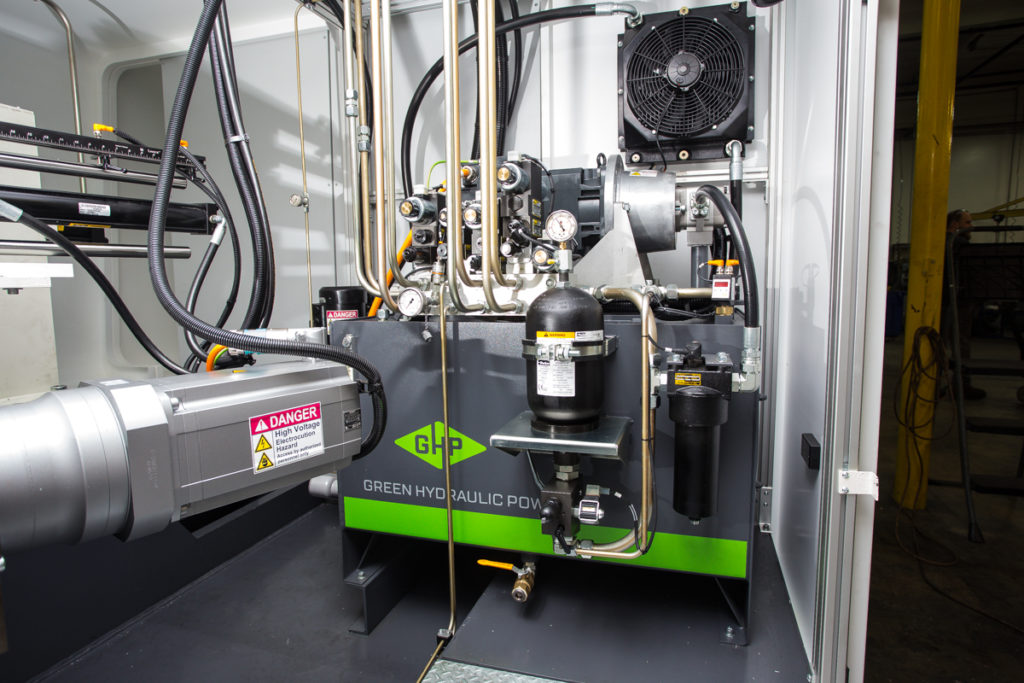 Machuca adds, “We had a very dynamic interaction with the Siemens engineering team to make this unit come alive. We frankly didn’t know what to expect at the outset, but the results have been very pleasing, so far. And we’ve only just begun.” He cited Siemens engineer Sean Sullivan as a very helpful part of the process. “Sean brought many ideas to the table to complement our own thinking. That synergy has paid off, in many ways.”
Machuca adds, “We had a very dynamic interaction with the Siemens engineering team to make this unit come alive. We frankly didn’t know what to expect at the outset, but the results have been very pleasing, so far. And we’ve only just begun.” He cited Siemens engineer Sean Sullivan as a very helpful part of the process. “Sean brought many ideas to the table to complement our own thinking. That synergy has paid off, in many ways.”
Further options under development for GHP include Siemens Scalance wireless control, kW torque setpoint on pressure, fail-safe compatibility, custom touchscreen and other monitoring and maintenance tools for operation and unit data transmission in an Industry 4.0 environment, over a Profinet industrial Ethernet protocol.
When equipped with the high-level Safety Integrated PLC from Siemens and other required components, the GHP is suitable for severe environments such as oil rigs, chemical processing equipment and other challenging work environment applications.
Lorentzen states the GHP is now available for sale or on a lease option.
Currently, machines with this green hydraulic unit are in operation at such industry giants as Meritor, SpaceX, Worthington and multiple plants of GKN Aerospace. Most have been in use for six months to a year without performance issues. Owing to the widely varying duty cycles involved, Lorentzen states, “We can say with high certainty our customers are experiencing up to 90% energy savings, plus the quieter operation and reduced carbon footprint as additional positives. I’m certainly glad I read what others were doing with servo-pump technology, as it’s made a big and very positive impact on our company.”
About Siemens USA
Siemens Corporation is a U.S. subsidiary of Siemens AG, a global powerhouse focusing on the areas of electrification, automation and digitalization. One of the world’s largest producers of energy-efficient, resource-saving technologies, Siemens is a leading supplier of systems for power generation and transmission as well as medical diagnosis. With approximately 348,000 employees in more than 190 countries, Siemens reported worldwide revenue of $86.2 billion in fiscal 2015. Siemens in the USA reported revenue of $22.4 billion, including $5.5 billion in exports, and employs approximately 50,000 people throughout all 50 states and Puerto Rico.
About MJC Engineering
MJC Engineering & Technology, Inc. was founded in 1994 in Huntington Beach, California in response to the lack of service and support within the CNC Metal spinning machine markets. Their goal was and remains, to service and support our customers with their custom-built CNC metal spinning equipment.
About Green Hydraulic Power
The innovative and experienced team of Green Hydraulic Power has been developing and integrating hydraulic power units with Variable Frequency Drive technology. GHP units represent trusted technology in an inventive package, offering enormous energy savings, limitless compatibility, and unprecedented affordability in the manufacturing industry all around the globe.

